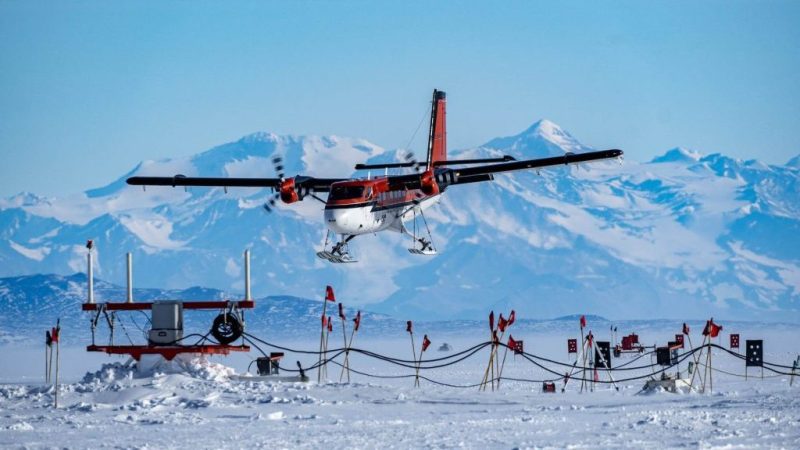Traditional airports spend big money to install instrument landing systems (ILS) to guide planes in safely. In places like Antarctica, though, it’s simply not possible to permanently install a massive antenna array for localization, particularly with all the ice shifting about on the regular. As covered by Flightradar24, the solution to this is to use a transponder landing system (TLS) instead.

A TLS tracks planes by using multilateration—basically, transponder signals are picked up by multiple antennas and the time delays are used to figure out the position of the aircraft. It then sends the guidance signals a plane would normally expect to receive from an ILS transmitter array, for horizontal and vertical guidance. These signals appear to the plane to be coming from antennas located as per a typical ILS array, with the TLS able to generate signals from ‘virtual emanation points” as needed. This allows the TLS to generate different landing approaches to suit different planes and conditions. From the pilot and aircraft side, it’s all perfectly transparent.
In Antarctica’s McMurdo station, landings are handled by a TLS system that barely takes up more space than a single shipping crate. The system can be set up in just a few hours, unlike a traditional ILS which takes significant installation work spanning weeks or months at best. At the moment, though, the landing strip at McMurdo is stable enough that the system only needs periodic realignment every three years or so.
You might assume that if you’re approaching Antarctica by plane, everything would be on manual. However, the creature comforts of modern airports are available even at one of the the most southerly airports on Earth!
















I wonder why more airports don’t use them?
Well, it’s smaller… so chances are some combination of increased cost/reduced features
Never heard of TLS before but from the write up it sounds like it can only handle one aircraft at a time, since the signal that is broadcast depends on the position of the plane. A regular ILS transmits a steady signal that is used by multiple aircraft at once, and the position of the plane determines the signal received instead of the signal broadcast.
Unless I missed something this is only a one-at-a-time Cat-I ILS only.
You ain’t gonna be doing a CAT-IIIa autoland with it.
Why not? the only issue is running out of runway length which may not be an issue if the ice is smooth enough and you dont normally schedule many aircraft minutes apart. There’s back up hardware in the Cat 3 aircraft in case the ground bound stuff faults, except for zero zero approaches someone should be looking out the window to verify that the landing site is actually there.
The Royal Air Force stopped using their auto-landing equipment back in the 1970’s as it was so accurate that the aircraft were damaging the runways with consistant impacts in the same area.
When I was summer over at McMurdo in the early ’80s, the ice runway used the transportable 3 way radar on a sled that helped the air controllers do manual landings of the Herc and C141s. You had to calibrate it each year, as the runway was re-built on new ice runway every year. The Coast Guard Ice breakers broke it up each year to prevent “rotted” ice from causing ruts as they used “wheels” to land. When the ice got too rugged for landing, they switched to the skiway for the balance of the season. The C141 carried most of the main body but landed on wheels, the Hercs (Experimental (XD-03), had retractable skis. I guess they have come quite a ways since then. We also had NDB installed at Transmitter site
“In Antarctica’s McMurdo station, landings are handled by a TLS system that barely takes up more space than a single shipping crate.”
The red & white box looks like a standard metal 20 foot long intermodal freight container. A crate is a typically smaller container usually made of wood.